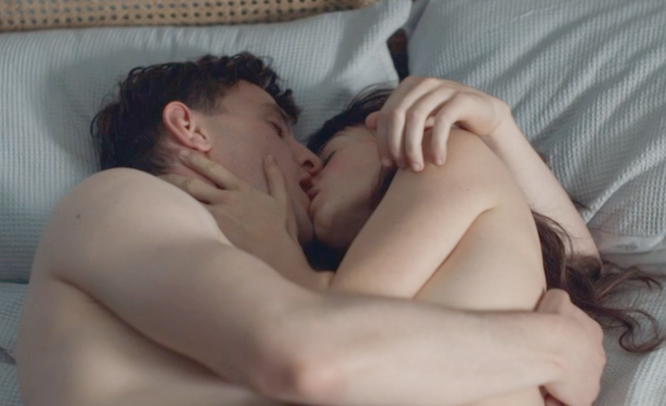
Normal People is blowing up the socials. Everyone has watched it, is watching it, or is being told to watch it right now. And with good reason – it’s a damn good show.
The limited series, based on the book of the same name, centres around the off/on relationship between Connell and Marianne, two high schoolers from different social groups who come together romantically – but in secret.
Over the years, they drift apart and rekindle their love multiple times. The series is being praised for its realistic sex scenes (and lots of them) as the pair find the heights of chemistry only with each other.

But there’s something far more important about these brilliant scenes. The way they depict consent.
Consent has been a huge topic the last few years. It arguably hit peak levels around the #MeToo movement, as celebrities began calling out those in charge within various entertainment industries for abusing their power and using it to obtain sexual favours.
Then, that controversial Babe.net Aziz Ansari story made headlines. Murky as it was, it highlighted a key issue culturally – how do we define sexual consent when the initial interest was shown? How can we ensure we have it throughout a sexual interaction, without turning heightened sexy times into a weird, clinical experience?
Normal People NAILS how to do this. Connell reads Marianne constantly during sex. He asks if she’s ok. If she seems unsure, he asks if she wants to stop. If she isn’t clearly in the throes of ecstasy, he asks if she’s enjoying herself.

None of these questions feel forced. They flow very naturally during their sexual interactions, and are only asked when Marianne is hard to read. When she’s clearly having a fantastic time, Connell isn’t there asking if she’s having fun or if she wants to stop. It’s obvious she doesn’t.
From talking to friends about consent and how it looks in the bedroom, it seems the hardest time to define how and when it should be sought is once sex has already started. Basically, “how can I continue asking for consent without making the sex super shit?”
Obviously, repeatedly asking your sexual partner “is this ok? Is that ok?” could dampen the mood. But it’s not about a clinical approach. It’s about giving a shit.
If you truly give a shit about whether your sexual partner is having a good time and is comfortable, you will be observant of signs they may not be. I believe people who baulk at the idea of saying “do you want to stop” either don’t understand that you only need to say that if you are sensing your sexual partner’s hesitation, discomfort or disinterest – or they literally don’t care if their partner is hesitant, uncomfortable or disinterested.

Rape culture is alive and well in this world, which is not only rooted in violence and oppression but in selfishness as well. It is a selfish act to impose sex or sexual acts on someone who is unwilling, and that selfishness extends to proceeding with any sexual interaction when the other person seems unsure, without asking their permission.
People who don’t give a shit – honestly I don’t know what it would take for them TO care. Wanting to not hurt other people is kind of the foundation for changing your behaviour, so if you don’t CARE if you hurt others – that’s a whole other issue.
But what about people who just don’t know HOW to ask for consent in the bedroom? To those people – I say this. It’s about reading the room. Being present, but also aware of the other person’s behaviour. When they seem hesitant or unsure – ASK if they’re okay with whatever you’re doing. Give them an opportunity to choose, so you know you’re both enjoying yourselves.
Still sound clinical to you? Watch Normal People, and see how natural it can be.
If you need to talk to someone about sexual consent, help is available. Contact Lifeline on 13 11 14, Kid’s Helpline on 1800 55 1800 or 1800RESPECT.



